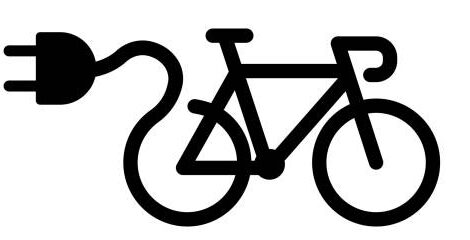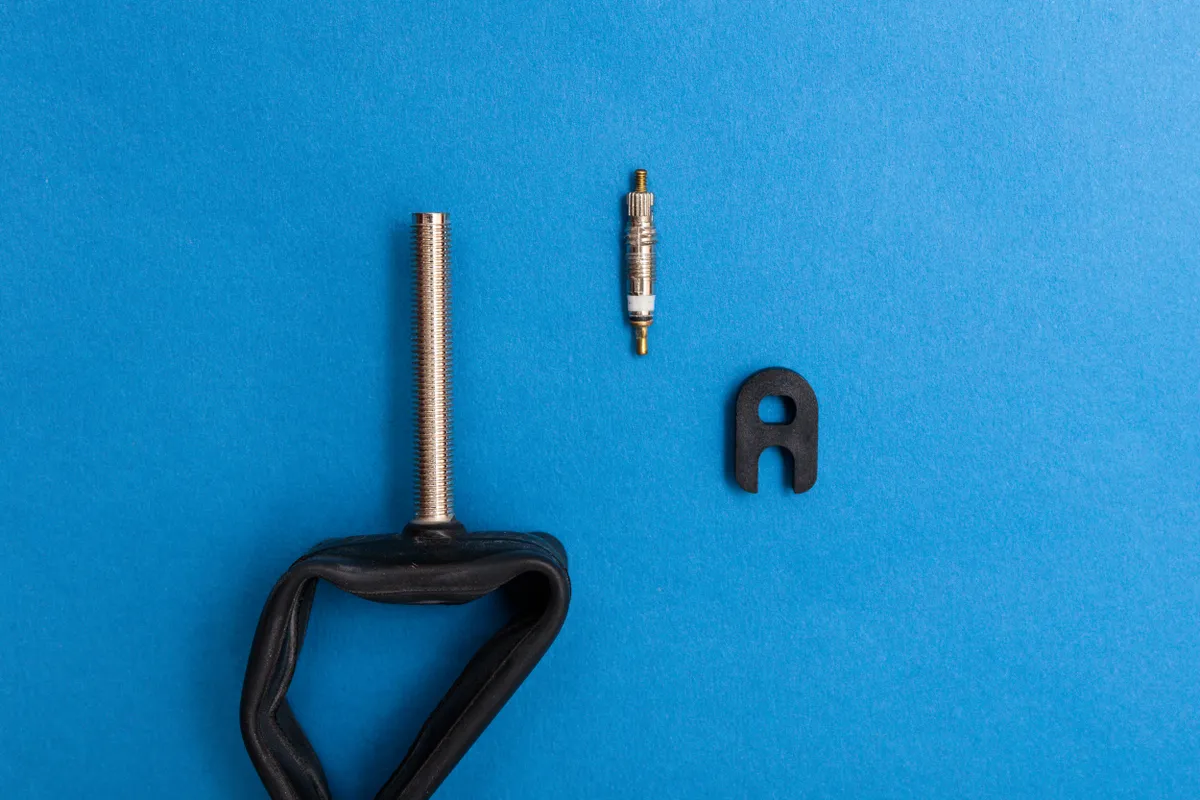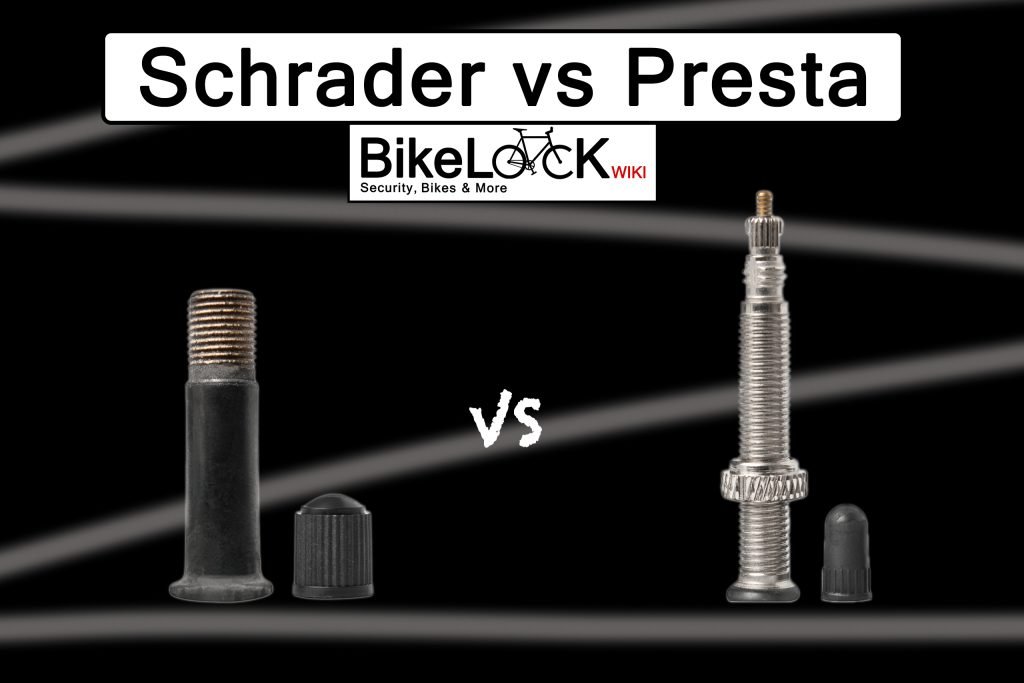Decoding Bike Valve Types: What You Need to Know
Many cyclists encounter a crucial decision when it comes to bike tire valves: choosing between Presta and Schrader valves. Understanding the differences between these two types is essential for proper inflation, maintenance, and overall cycling performance. The Presta and Schrader valve each serve the same fundamental purpose, to allow air to enter and be retained within the inner tube, but their design and application vary significantly.
The Schrader valve, often found on cars and readily accessible at most gas stations, shares a similar robustness and ease of use for bicycles. It’s commonly seen on entry-level bikes, mountain bikes, and hybrid bikes. Conversely, the Presta valve, with its slender profile and locking nut, is frequently favored by road cyclists and those seeking higher performance. This valve type is designed to handle higher air pressures. The confusion arises from their distinct appearances and inflation methods, which can be daunting for novice cyclists. However, grasping the nuances of each valve ensures optimal tire inflation and a smoother riding experience.
Selecting the correct valve type is not merely a matter of preference; it often depends on the bike’s design and the intended riding style. Bikes designed for higher speeds usually use Presta valve. Bikes for day-to-day use use Schrader valve. Both the Presta and Schrader valve have a place in the cycling world, and knowing their respective strengths empowers cyclists to make informed decisions. Whether you’re inflating a tire at home or seeking assistance on the road, familiarity with both Presta and Schrader valve mechanisms is indispensable. Understanding the core functions of both Presta and Schrader valve will allow you to keep your bike on the road.
Schrader vs. Presta: A Detailed Comparison
The nuances between presta and schrader valve often puzzle cyclists. A detailed comparison reveals significant differences. Size is a primary factor; Schrader valves are wider, similar to those found on car tires. Presta valves are narrower, designed for tighter spaces and higher performance. Construction also varies. Schrader valves feature a spring-loaded pin in the center that controls airflow. Presta valves utilize a valve core that must be unscrewed before inflation.
Air pressure capabilities differ between presta and schrader valve. Presta valves generally handle higher pressures, making them ideal for road bikes requiring inflation beyond 100 PSI. Schrader valves are typically used for lower pressure applications, common in mountain bikes and recreational bikes. Inflation ease is subjective. Schrader valves readily accept standard air compressors found at gas stations. Presta valves may require adaptors for these compressors. Inflating a presta and schrader valve might feel similar, but remember to always check for proper sealing of the pump head.
Susceptibility to damage is another consideration when choosing between presta and schrader valve. Presta valves, with their thinner stems, are arguably more prone to bending or snapping if mishandled. Schrader valves are more robust due to their wider diameter and sturdier construction. Rim design influences valve choice. Narrower rims often necessitate presta valves. Bike type plays a role; road bikes frequently use presta valves, while mountain and hybrid bikes often use schrader valves. The choice depends on a blend of factors, including pressure needs, rim compatibility, and personal preference. The presta and schrader valve each have strengths, so selecting the right one ensures optimal performance and inflation ease. Choosing the correct valve is crucial for maintaining optimal tire pressure and enjoying a smooth ride.
How to Inflate a Bike Tire with Each Valve Type
Inflating bike tires correctly is crucial for optimal performance and safety. Both presta and schrader valve types require slightly different techniques. Understanding these differences ensures accurate inflation and prevents damage to the valve or tire. The following steps outline the correct procedure for inflating tires with presta and schrader valve.
For a presta and schrader valve, begin by removing the valve cap. For presta valves, it’s essential to unlock the valve before attaching the pump head. This involves unscrewing the small nut at the tip of the valve stem. Once unlocked, firmly press the pump head onto the presta valve, ensuring a secure seal. Some pumps have a lever that needs to be engaged to lock the pump head in place. Inflate the tire to the recommended pressure indicated on the tire sidewall. Pay close attention to the pressure gauge on the pump. After reaching the desired pressure, disengage the pump head carefully and screw the presta valve nut closed. Replace the valve cap to protect the valve from dirt and damage. If using an adapter to inflate a presta valve with a schrader pump, ensure the adapter is securely attached to the presta valve before inflating. For schrader valves, remove the valve cap and directly attach the pump head. Ensure a snug fit to prevent air leakage. Inflate the tire to the recommended pressure. Schrader valves are similar to those found on car tires, making inflation straightforward with most standard air compressors. Once inflated, detach the pump head and replace the valve cap. Correct pressure is vital; under-inflation leads to pinch flats and increased rolling resistance, while over-inflation can cause blowouts. Always use a reliable pressure gauge to ensure accurate inflation.
Safety precautions are paramount when inflating bike tires. Always inspect the tire for any signs of damage before inflating. Ensure the tire is properly seated on the rim. Avoid exceeding the maximum pressure indicated on the tire sidewall. Inflating beyond this limit can cause the tire to explode, leading to injury. When using a floor pump, maintain a stable stance to prevent the pump from tipping over. If you’re using a CO2 inflator, exercise caution as the canister can become extremely cold during use. Wear gloves to protect your hands from the cold. In case of a leak, carefully detach the pump head and inspect the valve for damage. A faulty valve core may need replacement. Regularly check your tire pressure before each ride to maintain optimal performance and safety. Understanding how to properly inflate both presta and schrader valve equipped tires is a fundamental skill for all cyclists. With practice, this process becomes quick and efficient, ensuring a safe and enjoyable riding experience. Remembering these steps will help extend the life of your tires and rims, by keeping the presta and schrader valve in good working condition.
Benefits of Choosing Presta Valves
Presta valves offer several advantages, making them a popular choice among cyclists, especially those focused on performance. One key benefit is their lighter weight compared to Schrader valves. This might seem insignificant, but every gram counts when striving for optimal speed and agility, particularly in competitive cycling. The reduced weight contributes to a lighter wheelset, enhancing acceleration and overall bike handling. This is a significant advantage for road cyclists and racers where achieving the highest speeds is necessary.
Another compelling reason to choose Presta valves is their superior ability to handle higher air pressures. Road bikes often require tire pressures exceeding 100 PSI (pounds per square inch), and Presta valves are engineered to withstand these elevated levels without leaking or failing. The design of the Presta valve, with its valve core that seals more effectively under high pressure, makes it ideal for high-performance tires. This is a critical factor for cyclists seeking to minimize rolling resistance and maximize efficiency on paved surfaces. When comparing presta and schrader valve capabilities, presta valves often have an edge in high-pressure applications. Beyond functionality, many cyclists appreciate the sleeker, more streamlined aesthetic of Presta valves. Their slimmer profile complements the design of high-end road bikes and contributes to a cleaner overall appearance.
The perceived aesthetic appeal, combined with practical benefits like weight savings and high-pressure capability, solidify Presta valves as a preferred option in high-performance cycling. The design facilitates precise pressure adjustments. Releasing small amounts of air is easier with a Presta valve than with a Schrader valve, allowing cyclists to fine-tune their tire pressure for optimal performance and comfort. Therefore, when considering presta and schrader valve options, the advantages of Presta valves in terms of performance and aesthetics are undeniable for many cyclists. The use of presta and schrader valve depends on the type of bike and cycling discipline.
Advantages of Using Schrader Valves
Schrader valves offer distinct advantages for many cyclists. Their most notable benefit is compatibility with standard gas station air compressors. This makes topping off tire pressure incredibly convenient. You can quickly inflate your tires almost anywhere. This accessibility is a significant plus for everyday cyclists. Schrader valves are often found on car tires. Their widespread availability simplifies inflation when you’re on the go.
Beyond convenience, Schrader valves are known for their robust construction. They are generally more resistant to damage than their Presta counterparts. The valve core is housed within a sturdy metal stem. This design makes them well-suited for bikes that endure rough handling. Mountain bikes and hybrid bikes frequently use Schrader valves. These bikes often encounter challenging terrain. The durability of Schrader valves ensures reliable performance in demanding conditions. While high air pressure isn’t always needed, their strong build provides peace of mind.
Schrader valves are typically favored for bikes requiring lower tire pressures but higher tire volumes. Mountain bikes, for example, benefit from the larger air volume. This allows for better shock absorption on trails. Everyday commuting bikes also benefit from the ease of use and durability. Though Presta valves have their place, Schrader valves offer a practical and reliable option. The ease of inflation and robust design of the schrader valve make it a popular choice. Many cyclists appreciate the simplicity and dependability, even with presta and schrader valve options available. The schrader valve remains a trusted component for various cycling needs, with both presta and schrader valve each offering distinct use.
Specialized S-Works Valve and Continental Race Valves: A Quick Look
Beyond the fundamental differences between presta and schrader valve designs, the market offers specialized valves designed for enhanced performance. These premium options often incorporate innovative materials and construction techniques aimed at optimizing airflow, reducing weight, and improving overall durability. While both presta and schrader valve benefit from these advancements, presta valves tend to be the primary focus due to their prevalence in high-performance cycling.
The Specialized S-Works valve represents one such example of a high-end presta valve. Engineered for speed, these valves often feature wider internal diameters to facilitate faster inflation and deflation. This can be particularly advantageous during races or time trials where rapid tire pressure adjustments are crucial. Material selection also plays a key role, with lightweight alloys or carbon fiber components used to minimize weight. This attention to detail contributes to marginal gains in overall bike performance. In this context, the choice between presta and schrader valve becomes less about basic functionality and more about optimizing every aspect of the cycling experience.
Continental Race Valves are another notable example of performance-oriented presta valves. These valves are designed to provide exceptional reliability and performance under demanding conditions. Features may include reinforced valve stems to prevent bending or breakage, as well as optimized valve cores for smooth and consistent airflow. The Continental Race Valves and Specialized S-Works Valve also often undergo rigorous testing to ensure they meet the stringent standards of professional cyclists. Ultimately, while standard presta and schrader valve options adequately serve most cyclists, these specialized valves cater to riders seeking the highest levels of performance and reliability. Understanding the nuances between presta and schrader valve designs, and the availability of high-performance alternatives, allows cyclists to make informed choices based on their specific needs and riding style.
Choosing the Right Bike Valve for Your Needs
Selecting the appropriate bike valve hinges on several factors tailored to your cycling habits and equipment. Understanding the differences between presta and schrader valve is paramount. The decision-making process should include evaluating your bike type, typical riding style, and the air pressure requirements for your tires. Consider also personal preferences regarding ease of use and maintenance. These considerations will guide you toward the optimal presta and schrader valve choice.
Bike type significantly influences valve selection. Road bikes often benefit from Presta valves due to their capacity to handle higher pressures. Mountain bikes and hybrid bikes frequently utilize Schrader valves. Schrader valves offer robustness for off-road conditions. If your riding style leans towards high-performance road cycling, Presta valves might be preferred. Commuting or recreational riding could make Schrader valves a more practical option because presta and schrader valve each caters to specific needs. Evaluate the typical air pressure you require. High-pressure tires, common in road cycling, are easily managed by Presta valves. Lower pressure, higher volume tires, often found on mountain bikes, work well with Schrader valves. This is an important consideration when choosing between presta and schrader valve.
Ease of use is another crucial aspect. Schrader valves are straightforward to inflate, especially with readily available gas station air compressors. Presta valves require a bit more finesse. They need to be unlocked before inflation. Adaptors can make Presta valves compatible with Schrader pumps, offering greater flexibility. Ultimately, choosing between presta and schrader valve involves weighing these trade-offs. Reiterate the key differences. Presta valves offer lighter weight and superior high-pressure performance. Schrader valves provide convenience and durability. Consider which factors are most important for your individual cycling needs. This personalized approach ensures you select the best presta and schrader valve option for your riding experience.
Troubleshooting Common Valve Problems
Many cyclists encounter issues with presta and schrader valve systems. Leaks are a frequent concern. These can occur around the valve stem or at the valve core. A simple tightening of the valve core, using a valve core tool, often resolves the issue. For presta and schrader valve stems, inspect for any visible damage or bends. A bent valve stem can prevent a proper seal. Replacement of the inner tube or tire is often necessary in such cases. When inflating, difficulty attaching the pump head correctly can lead to air loss. Ensure the pump head is securely fitted and properly aligned with the presta and schrader valve.
Presta valves are more prone to bending due to their slender design. Exercise caution when attaching and detaching the pump. For persistent leaks, consider using a tire sealant. Sealants can effectively seal small punctures and leaks around the presta and schrader valve stem. Applying Teflon tape to the presta and schrader valve threads can also create a tighter seal. If the presta valve core is damaged, replacements are readily available and easy to install. When dealing with tubeless setups, proper presta and schrader valve installation is crucial. Ensure the valve stem is securely seated within the rim and that the valve nut is tightened appropriately, but not over-tightened, to prevent air leakage.
Sometimes, debris can obstruct the presta and schrader valve, preventing proper inflation or deflation. Clean the presta and schrader valve area with a small brush or compressed air to remove any dirt or grime. If you experience persistent difficulty inflating a presta valve, try gently pushing the presta valve core inward to ensure it is not stuck. Remember that regular maintenance and inspection of your presta and schrader valve can prevent many common problems. By understanding the potential issues and implementing these troubleshooting tips, cyclists can maintain optimal tire pressure and enjoy a smooth, trouble-free ride. Correcting common valve issues will enhance the lifespan of both presta and schrader valve systems.




